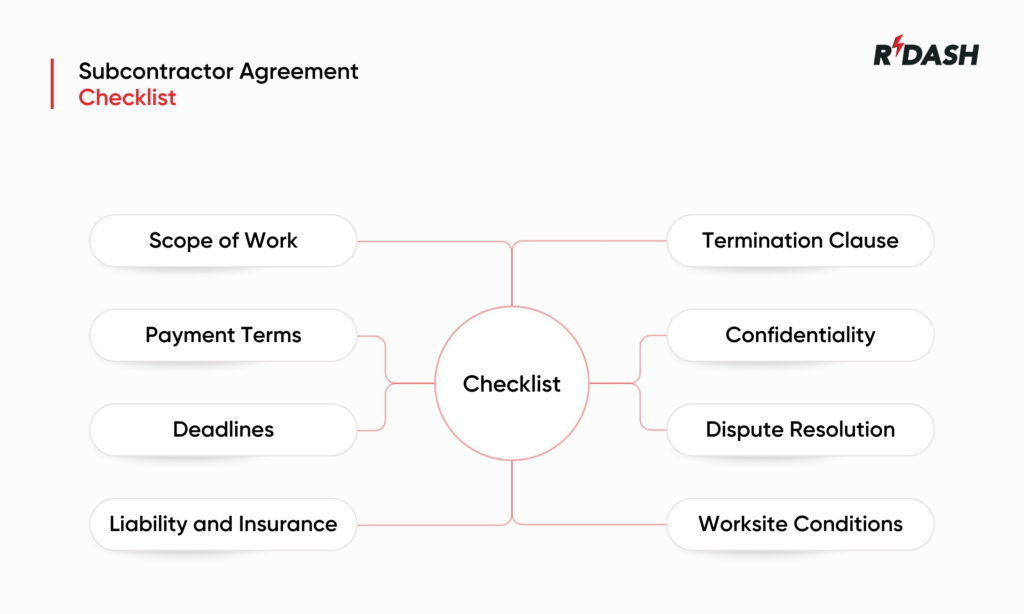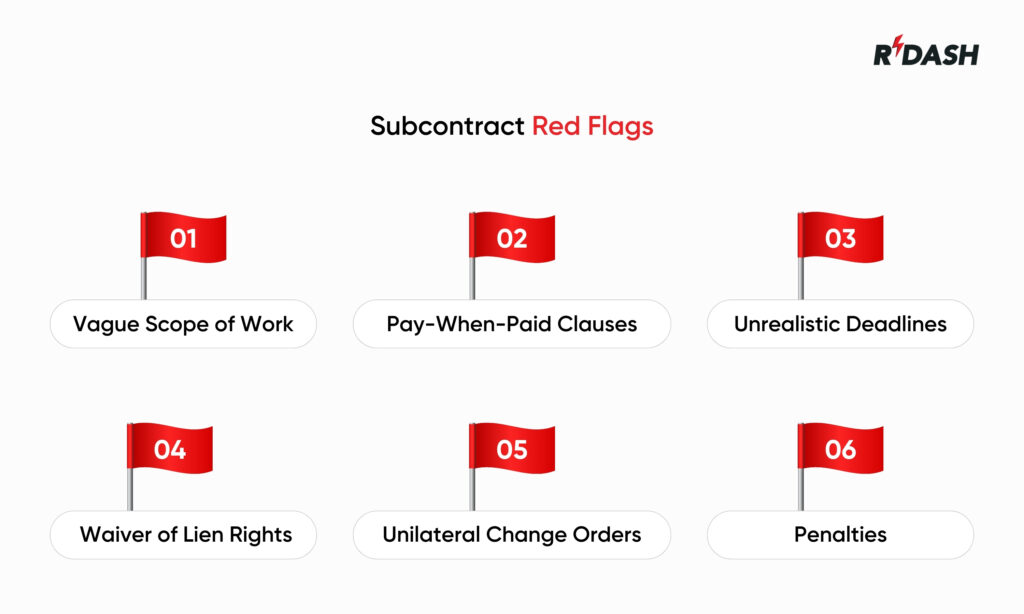What is a Subcontractor Agreement?
A subcontractor agreement is essentially a contract that lays down the rules for the partnership between a main contractor and a subcontractor on a particular project. It’s a key piece of documentation that not only spells out each party’s duties but also ensures the subcontractor’s contributions meet the high standards expected by the main contractor or their client.
Think of this subcontractor agreement as your roadmap. It sets expectations clearly, covering everything from the scope of the project to how payments will be handled. It’s particularly crucial in sectors like construction, where you need folks with specific skills. Instead of hiring full-time employees, contractors often prefer to bring in subcontractors for particular tasks—be it wiring, plumbing, or woodworking.
Not only does the subcontractor agreement shield the contractor’s interests, but it also ensures that subcontractors are treated fairly, guaranteeing they get paid and fully understand their responsibilities. This helps avoid any confusion that might pop up during the project, keeping things running smoothly from beginning to end.
What should be included in a Subcontractor Agreement?
Crafting a subcontractor agreement? Make sure to include certain key elements to protect everyone involved and clarify their roles. Here’s the rundown:

Scope of Work: Detail exactly what the subcontractor will be doing. List out the duties, the project timeline, and expected outcomes. The more specific, the better—to prevent any misunderstandings about what’s expected.
Payment Terms: Be clear on the payment strategy. How much, how often, and under what conditions? Outline any penalties for late or subpar work to keep everyone on their toes.
Deadlines: Specify when things need to be done. Clear deadlines help keep the project on track and ensure timely completion.
Liability and Insurance: This is all about who foots the bill if something goes wrong. Make sure your subcontractor has the necessary insurance to handle potential mishaps.
Termination Clause: Sometimes things don’t work out. This clause explains how either party can bow out if it’s not working. This might be due to not meeting the project standards, a breach of contract, or just a mutual decision to part ways.
Confidentiality and Non-Disclosure: Got any trade secrets or sensitive info involved in your project? This part ensures your subcontractor keeps lips sealed.
Dispute Resolution: If disagreements pop up, here’s how you’ll handle them—whether it’s through mediation, arbitration, or court.
Worksite Conditions: It’s crucial to spell out who’s in charge of keeping the worksite safe and compliant with all local regulations.
Each section is there to protect both sides and lay the groundwork for a smooth collaboration. Paying attention to these details when drafting or reviewing your subcontractor agreement can help you avoid expensive legal headaches down the road.
By including these components, you make sure that the project starts on solid footing with every party clear about their role, responsibilities, and the protections in place. This way, both the contractor and the subcontractor can focus on what they do best, secure in the knowledge that their interests are safeguarded.
Key Insights for Subcontractors on Construction Contracts
For subcontractors in the construction sector, getting a grip on the nuances of construction contracts is essential. This ensures they understand their rights and responsibilities thoroughly. Here’s what they need to know:
Scope and Limitations: It’s crucial for subcontractors to clearly understand which tasks are theirs to handle and which are not. This clarity helps avoid taking on unanticipated tasks and ensures they are compensated for any additional work performed beyond the initial agreement.
Payment Clauses: Particular attention should be paid to “pay when paid” clauses, which mean subcontractors receive payment only after the contractor has been paid by the client. Knowing this helps subcontractors manage their expectations and prepare for potential delays in payment.
Lien Rights: It’s vital for subcontractors to know their lien rights, which allow them to claim against the property they’ve worked on if they’re not paid. This is a powerful tool, but it must be used correctly and legally.
Compliance with Regulations: Subcontractors must stay informed about local and state regulations, including building codes and safety standards. Ignorance of these can lead to legal troubles and even contract termination.
Adjustments to the Project: As construction projects can evolve over time, understanding how change orders work is essential. This knowledge allows subcontractors to negotiate additional compensation for any extra work required as the project scope changes.
By mastering these elements, subcontractors can better protect themselves and ensure their contributions are made under fair conditions.
Benefits of Subcontractor Agreement
For subcontractors, this subcontractor agreement isn’t just procedural; it’s a vital tool that offers numerous benefits:
Clarifies Work Expectations: The subcontractor agreement clearly outlines what subcontractors are supposed to do, which prevents any confusion over the required tasks and ensures subcontractors are not pushed into extra work without proper compensation.
Secures Payment Rights: Clearly defined payment terms ensure subcontractors know when and how they will be paid, which is particularly beneficial for managing cash flow effectively.
Minimizes Liability: Insurance and liability clauses help protect subcontractors from being held accountable for incidents not directly related to their work, reducing potential legal and financial risks.
Legal Recourse: In case of disputes, the agreement acts as a legal reference point, providing a solid foundation for negotiation or legal action.
Ensures Project Consistency: The agreement sets quality standards and procedures, aligning expectations and minimizing the chances of last-minute changes or conflicting directions.
Establishes Professional Boundaries: A formal contract enhances a subcontractor’s professional image and clarifies that they are an independent contractor, not an employee, which is crucial for maintaining control over their work methods and schedule.
Subcontractor agreements are invaluable not only in protecting contractors but also in offering significant advantages to subcontractors by ensuring fairness, transparency, and legal protection. Such well-structured agreements are essential tools for maintaining business interests and fair treatment throughout the project.
Watch out for these subcontract agreement red flags
Subcontractor agreements aren’t always as fair or advantageous as they might seem. Here are some warning signs that subcontractors should keep an eye out for when they’re digging into the details of a subcontract:

Vague Scope of Work: A clearly defined scope of work is essential. If the contract uses vague terms like “as needed” or “as directed,” it might set the stage for extra, uncompensated work. Being clear from the get-go can save a lot of headaches later.
Pay-When-Paid Clauses: This common clause in construction contracts stipulates that subcontractors get paid only after the contractor has received payment from their client. These can be problematic if there are delays from the client’s side. It’s wise for subcontractors to push for more specific payment timelines to avoid endless waiting.
Unrealistic Deadlines: Watch out for deadlines that seem too tight or practically unachievable. These can lead to penalties or allegations of poor performance, unfairly putting pressure on subcontractors to speed through their tasks.
Unilateral Change Orders: If a contract allows the contractor to make changes without offering additional compensation, that’s a definite red flag. Subcontractors should insist on formal change orders that include proper compensation for any modifications in the scope or materials used.
Waiver of Lien Rights: Agreeing to waive lien rights—where subcontractors forfeit the right to claim against a property if they aren’t paid—can be risky. Such agreements should only be signed if timely payment is guaranteed.
Excessive Penalties for Delays: Contracts that impose harsh penalties for delays, especially those beyond the subcontractor’s control, should be approached with caution. It’s important to negotiate fair terms that recognize the complexities of construction work.
Identifying these issues early in the negotiation process can prevent subcontractors from entering into agreements that might not serve their best interests.
Subcontractor agreement terminology
Understanding the lingo used in subcontractor agreements can empower subcontractors to navigate these contracts more effectively. Here are some key terms every subcontractor should know:
Pay-when-Paid: This term is used frequently in subcontractor agreements, indicating that the subcontractor’s payment is dependent on the contractor first receiving payment from the client. It establishes a timeframe for payment to the subcontractor following the contractor’s receipt of funds, but it doesn’t guarantee payment unless the contractor gets paid.
Pay-if-Paid: A more stringent arrangement than pay-when-paid, this clause means that payment to the subcontractor will only occur if the contractor is paid by the client. This type of clause places the risk of client non-payment squarely on the subcontractor, potentially leading to significant financial exposure.
Indemnification: Commonly found in these agreements, indemnification involves one party agreeing to safeguard the other against certain losses or damages. This typically shifts risk from the contractor to the subcontractor, meaning the subcontractor could be liable for issues that arise during the course of the project, affecting both liability and financial stakes.
Knowing these terms and how they can impact contractual relationships is crucial for subcontractors to protect their interests and ensure fair treatment in their contractual dealings.






